
“Just… one… more… turn…” Sid Meier’s Civilization franchise is the game loved by all strategy game lovers around the world. From Civilization I to VI, the franchise has always presented something new for 30 years and is loved by the players, regardless of whether they are old fans or not.
Civilization VI, the latest game, also came out with a new system and compelling features. The question is, how can they always try new things in the game with such a long history? How was Civilization 6 able to implement new features in an old game? Let us hear from Ed Beach, lead designer for Civilization VI, on how he led the evolution of Civilization.
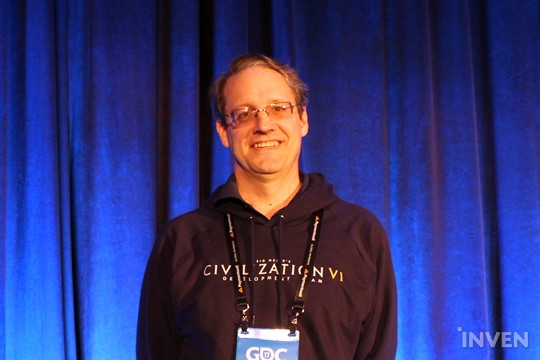
*This article has been written in the perspective of the speaker for readability purposes.
6 years have passed since the release of Civilization V, but it is still one of the top 3 games in the Steam Charts. Developing a new series for this popular game was a lot of pressure for us developers. Civilization VI was a highly anticipated game.
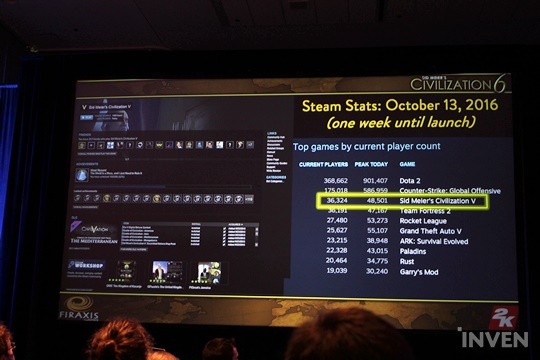
We had revealed and promoted Civilization VI last year in different game shows. In E3, we released a promotional video with Sean Bean’s voice and held a lot of interviews. Mark Zuckerberg even posted a facebook status that he is looking forward to playing Civ 6.
The biggest event was WBC, where a QnA session with our fans was held. Everyone told me not to feel pressured, but to me it sounded like, “no pressure, but you do know that I love the Civilization franchise, right? So if you mess up with the new series…”

That was the main issue. How could I plan and develop the latest highly anticipated version of this popular franchise? I struggled and struggled, looking for the answers.
One thing I remember is the question I had been getting from the public media. “What are the new features in Civ 6 and where did you get the ideas for them?” The answer to this question lies within all the processes that the franchise has gone through.

Let us look at Gods and Kings, the expansion for Civilization V. As we tried to solve the problems that Civ 5 had in the expansion, we tried to solve the problems that the previous versions had in Civ 6. We reset the HP for some units to balance battles, revived the religion system, added the espionage system, and diversified naval units.
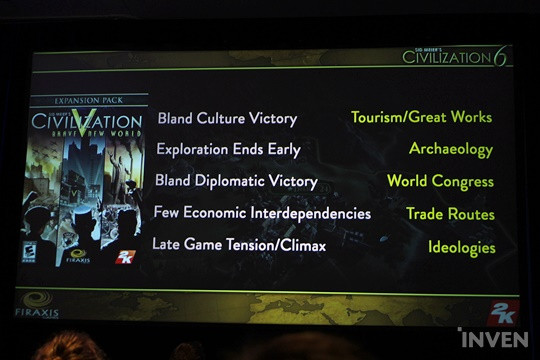
The features that were added in the next expansion, Brave New World, were for the same purpose. We rebuilt cultural victory, made the end-game content available earlier, rebuilt diplomatic victory and other things to make the game tenser towards the end of game. We also added new features like Tourism and Trade Routes to support the rebuilt systems.
Of course, no game is perfect from the beginning. We made a list of things that should be rebuilt and followed the list one by one, to make a perfect game.

We have a very active community. Our fans are very active in exchanging information. They tell us what they liked from the previous versions and what they didn’t like from the latest version. This forum is for Civ 5, and people are still posting things.
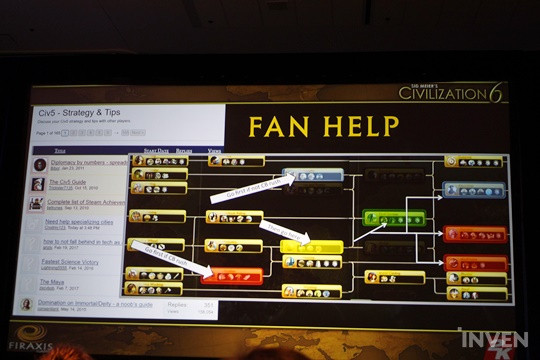
Sometimes they share their strategies with others, like “don’t choose Liberty tech” and “build this building first.” They enjoy making builds for victory. This could work as a play reference, but sometimes can bring a negative outcome.

The players like to use the “single path to victory.” “Build 4 cities”, “Rush to National College”, and “Science is King”. These became the standard play style and everyone just repeated this strategy to win the game. This is not a positive way of playing.
What could be the possible solution then?
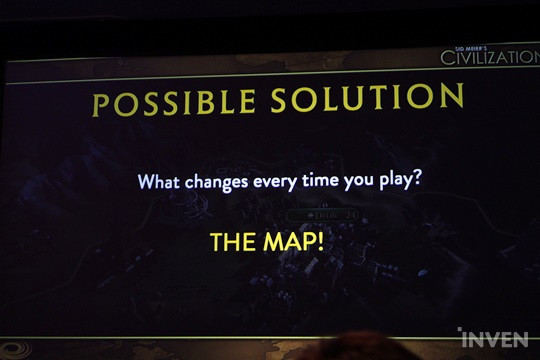
I want to ask you one thing. What is the thing that changes every time you play? That’s right; the map. When a game begins, the players will look around the starting area and decide what to do next. I love maps as much as I love history, and we present the players with different surroundings for every game. The players must find a way to survive within that surrounding.
The map is the key to make a play. The map is the secret behind the long success of the Civilization franchise, and the answer for the development of Civ 6.
The maps are composed of tiles. Tiles are one of the things that give me hard times. The purpose for each tile was too obvious in Civ 5; plains for farms and mountains for mines. Everything was predetermined, and buildings were stacked in the city tile. I could see that this was a problem.

Now let us look at the tiles in Civ 6. You can see the city districts around the city. The commercial hub is near the river, and the holy site and the campus are near the mountain. The city can expand depending on how the player utilizes the surroundings. This is the main reason why Civ 6 did not allow stacked buildings.
Like we did not allow unit stacks anymore from Civ 5, we did the same thing for cities. The players must consider what districts to build, and decide on what feature to focus on. This process of thinking and making choices will make every play memorable.

The next problem is the Tech Tree. The Tech Tree is probably the most important feature of Civilization. Than being said, I do not want the tech tree to look the same in Civ 5 and 6. The tech tree can be problematic. The players must decide how they’ll progress depending on the tech tree, but it is hard to tell if choosing a certain tech would work out well later. That is why I thought there must be a tool that tells the players which tech to get first and which tech tree will be good for them in the long run.

That is why we added the Boost system. The players can choose to boost Sailing by founding a city on the coast, or discover a natural wonder to boost a certain tech. The tech boost can work as a guideline that tells the players what they should do first. But the tech boost is activated only with a reasonable trigger, so it takes about 9 month to activate the entire tech boost.

Another problem was the Social Policy. The social policy in Civ 5 was pretty unbalanced. One of the tips was “do not choose Liberty.” We wanted to continue using the idea of social policy, but we definitely needed a rebuild. So we went back to the social policy in Civ4, where the players could choose a form of government first and the policies that fit the government.
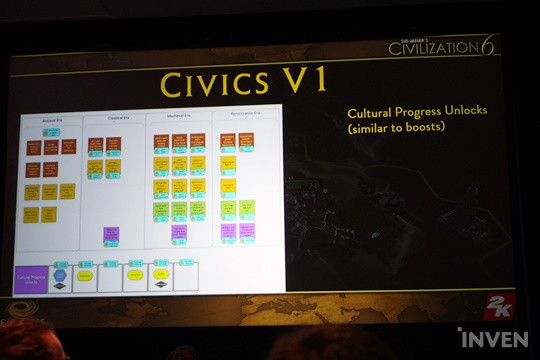
The prototype of the social policy system allowed for any policy to be unlocked. But this created too much complexity because there were too many policies to unlock and manage. Some people didn’t really like this play style.
In the second version, we separated the policies based on their tiers and the form of government and gave each government different numbers of available policies. Each form of government has its own advantages and disadvantages, but this system didn’t really give the feel that the government is evolving. Just because oligarchy becomes commercial republicanism and commercial republicanism becomes communism, does not mean that the government has evolved. On the opposite, the players might have to choose a government that they don’t want because they need a certain feature.
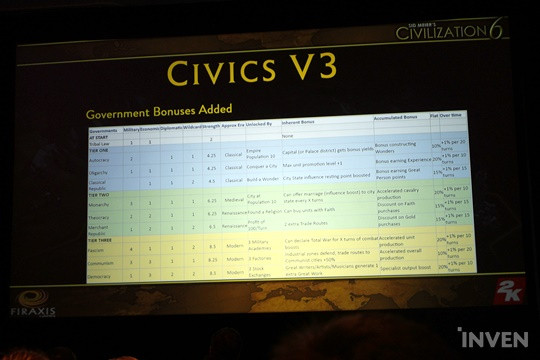
Lastly, the third and final version came out, which is the version you can actually see in the game. Every form of government has the same number of policies and has government bonuses. The players must spend culture points to receive government bonuses. This was a good type of complexity that could be added to the game.

The last thing that needed a rework was the units. Unit stacks were not allowed anymore from Civ 5, but this has caused some other problems. For example, an infantry unit cannot walk across the cannon units and missile units, which weakens the players’ military strength.
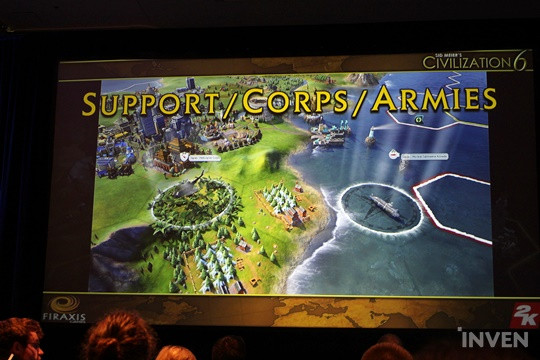
So we have decided to allow unit stacks again, up to 3 units, but limited the unit promotion capacity. Also, we divided the units into two types, army corps and support corps.
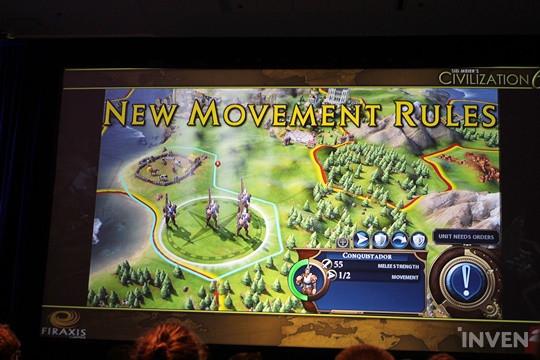
Also, new movement rules are applied. The units could enter any terrain if they have at least 1 movement left. From now on, the units need to have full movement in order to enter the terrain. This would allow for fair battles and strategies.

The key feature of Civ 6 is Map-Driven Play. Unstacked cities, relieved congestion, and new movement rules are all for a Map-Driven Play. Our goal is to let the players have their own experiences playing the game and build their own strategy for each play. Welcoming the changes in maps and utilizing the changes is what makes the experience, because the Map is the core feature of the Civilization franchise. I want you to keep this in mind when you are playing Civilization.
Sort by:
Comments :0







